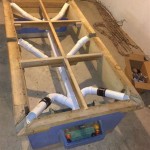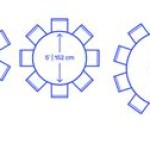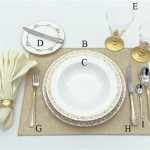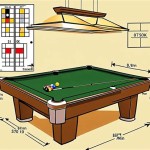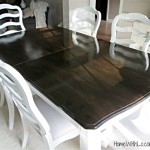Danish Round Side Tables: A Timeless Design Staple
Danish round side tables represent a significant contribution to the mid-20th-century modern design movement. Their enduring popularity stems from a combination of functional design, high-quality materials, and a timeless aesthetic that complements a variety of interior styles.
Key Characteristics of Danish Round Side Tables
Several key features define the Danish round side table, setting it apart from other styles:
- Emphasis on organic forms
- Use of natural materials like wood and teak
- Simple, clean lines
- Focus on functionality and practicality
- Integration of traditional craftsmanship with modern design principles
Materials and Construction
Danish round side tables are typically constructed from high-quality hardwoods, particularly teak and oak. Teak, prized for its durability and water resistance, was a popular choice for Danish furniture makers. Oak, with its beautiful grain patterns and robust nature, offers another desirable option.
Construction techniques often emphasize joinery and craftsmanship. Dovetail joints and mortise-and-tenon connections showcase the attention to detail prevalent in Danish furniture making. These traditional methods contribute to the longevity and sturdiness of the tables.
The Influence of Danish Modernism
Danish round side tables are firmly rooted in the Danish Modernism movement of the mid-20th century. This design philosophy emphasized functionality, simplicity, and the use of natural materials. It embraced the concept of democratic design, making well-designed, high-quality furniture accessible to a wider audience.
Designers such as Hans Wegner, Børge Mogensen, and Arne Jacobsen played pivotal roles in shaping Danish Modernism. Their work, characterized by clean lines, organic shapes, and a focus on human needs, continues to influence contemporary furniture design.
Integrating Danish Round Side Tables into Various Interior Styles
The versatility of Danish round side tables allows them to seamlessly integrate into various interior design styles.
Style Compatibility
- Mid-Century Modern: A natural fit, complementing the existing aesthetic.
- Contemporary: Adds a touch of warmth and classic design to modern spaces.
- Scandinavian: Reinforces the minimalist and functional Scandinavian theme.
- Eclectic: Provides a grounding element and a touch of sophistication.
- Transitional: Bridges the gap between traditional and contemporary styles.
Placement and Functionality
Danish round side tables can serve a variety of functions in different rooms:
Placement Options
- Living Room: Beside a sofa or armchair for holding drinks, books, or lamps.
- Bedroom: As a nightstand, offering a stylish and practical surface.
- Entryway: A welcoming spot for keys, mail, or decorative items.
- Home Office: A convenient surface for a laptop, phone, or notepad.
Caring for Danish Round Side Tables
Proper care ensures the longevity and beauty of these timeless pieces.
Maintenance Tips
- Regular dusting with a soft cloth.
- Avoid placing hot items directly on the surface.
- Use coasters to prevent water rings.
- Periodically apply a wood oil or polish to maintain the finish.
- Consult a professional for repairs or restoration.
Identifying Authentic Danish Round Side Tables
When purchasing a Danish round side table, consider the following factors to assess its authenticity:
Authenticity Indicators
- Construction techniques: Look for traditional joinery methods.
- Materials: Examine the type and quality of the wood.
- Maker's marks or labels: Check for identifying marks or labels.
- Provenance: Research the history of the table, if possible.
- Overall design and style: Compare the table to known examples of Danish Modern furniture.
Danish round side tables continue to be highly sought-after pieces, representing a significant contribution to design history. Their timeless aesthetic, quality construction, and functional design ensure their enduring appeal for generations to come.

Danish Round Side Table 1960s

Danish Art Nouveau Round Side Table In Oak 1930s

Sika Teak Side Table Round W Trays On Wheels 50s 60s Danish Mid Century Modern
Danish Modern Round Teak Side Table By MØbelintarsia 1960s L Re Jules Vintage

Small 60s Danish Design Coffee Table Round Solid Teak John Boné For Mikael Laursen 80 Cm 54h Denmark Mid Century Retro Vintage

Danish Round Side Table 1960s

Danish Modern Teak Round Side Table At 1stdibs

Danish Round Side Table In Teak 1970s Chairish

Midcentury Danish Modern Round Side Table By Hans C Andersen For Artek Teak At 1stdibs

1960 S Danish Modern Teak Round Side Table Chairish
Related Posts


